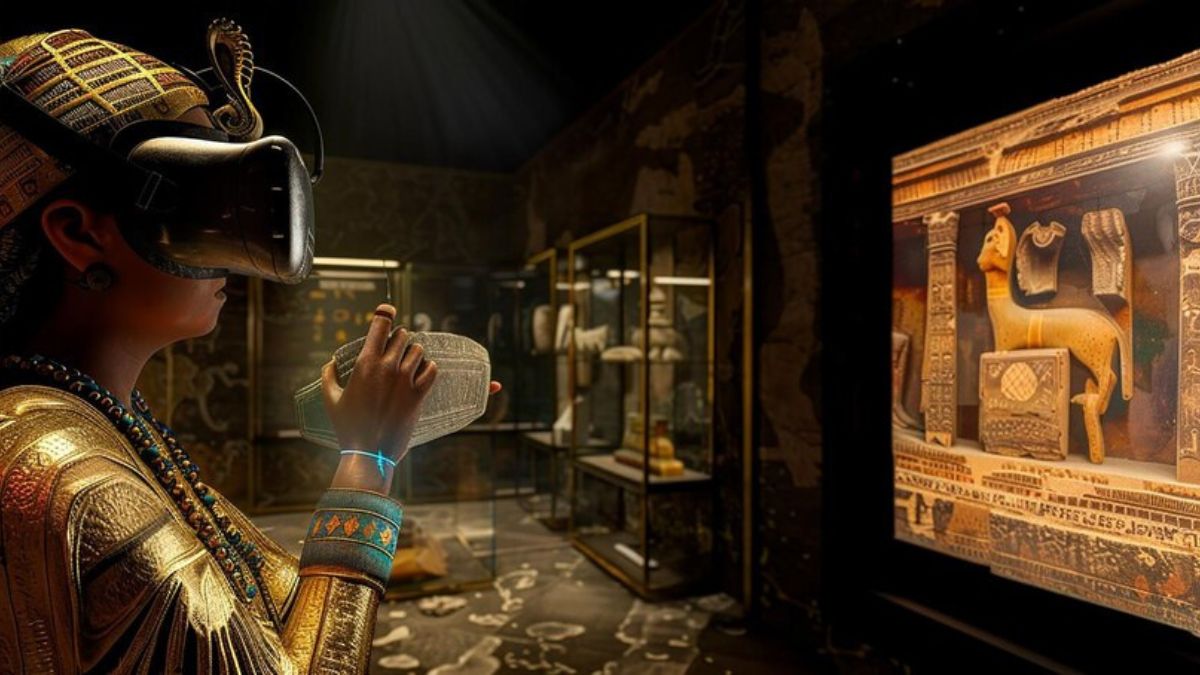Ancient art serves as a window into the past, offering glimpses into the lives, beliefs, and practices of civilizations long gone. From the elaborate frescoes of ancient Egypt to the intricate pottery of ancient Greece, each piece tells a story that transcends time. This journey through ancient art is not just an exploration of artistic techniques, but a deep dive into the cultures and societies that shaped our world today.
The Origins of Ancient Art
Ancient art has its roots in the earliest human civilizations, where the need to communicate, document, and express emotions gave rise to various forms of artistic expression. From the cave paintings of Lascaux to the sculpted figures of Mesopotamia, these early artworks reveal the inherent creativity of early humans. They also provide valuable insights into the daily lives, spiritual beliefs, and societal structures of these ancient communities.
The Role of Religion in Ancient Art
Religion played a pivotal role in the creation of ancient art. Many of the most significant ancient artworks were created to honor deities, commemorate religious events, or serve as offerings. In ancient Egypt, for example, the art of mummification was not just a practical process but a deeply religious one, with intricately decorated sarcophagi serving as both art and a gateway to the afterlife. Similarly, in ancient Greece, temples adorned with detailed sculptures and frescoes were built to honor the gods, reflecting the close relationship between religion and art.
Ancient Art Techniques and Materials
The techniques and materials used in ancient art were as diverse as the cultures that produced them. In ancient Egypt, artists used pigments made from minerals to create vivid frescoes, while in ancient China, the use of bronze casting techniques led to the creation of intricate ritual vessels. The Greeks perfected the art of sculpting marble, producing lifelike statues that have stood the test of time. Understanding these techniques and materials provides insight into the technological advancements of ancient societies and their impact on the development of art.
Iconic Ancient Artworks and Their Stories
Some ancient artworks have achieved iconic status, becoming symbols of the cultures from which they originated. The Rosetta Stone, for example, is not just a piece of Egyptian art but a key to understanding ancient Egyptian hieroglyphs. The Parthenon Marbles, originally part of the Parthenon temple in Athens, tell the story of the city’s golden age and its devotion to the goddess Athena. Each of these artworks has a unique story that contributes to our understanding of the culture and history of ancient civilizations.
The Influence of Ancient Art on Modern Culture
The influence of ancient art extends far beyond the past, impacting modern art, architecture, and culture. The classical ideals of beauty and proportion developed by the ancient Greeks continue to inspire contemporary artists and designers. Similarly, the motifs and symbols found in ancient Egyptian art have found their way into modern jewelry, fashion, and even pop culture. This enduring influence demonstrates the timeless appeal of ancient art and its relevance in the modern world.
Understanding Symbolism in Ancient Art
Symbolism is a key component of ancient art, with many artworks carrying deep, often hidden, meanings. In ancient Egyptian art, the ankh symbol represented life, while the scarab beetle symbolized rebirth. Understanding these symbols is crucial to interpreting ancient art, as they often convey messages about the beliefs, values, and practices of the culture that created them. Through symbolism, ancient artists were able to communicate complex ideas and emotions that resonate across time.
Preserving Ancient Art: Challenges and Techniques
Preserving ancient art presents numerous challenges, from environmental degradation to human intervention. Techniques such as restoration and conservation are essential in protecting these cultural treasures for future generations. Advances in technology have also played a role, with digital preservation methods allowing for the creation of detailed records and reproductions of ancient artworks. Despite these efforts, the preservation of ancient art remains a complex and ongoing task, requiring a delicate balance between maintaining authenticity and preventing further deterioration.
Ancient Art and Architecture: A Symbiotic Relationship
Ancient art and architecture were often intertwined, with buildings serving as canvases for artistic expression. The temples of ancient Egypt, for example, were adorned with elaborate carvings and paintings that reflected the religious and cultural beliefs of the time. In ancient Rome, public buildings and monuments were often decorated with intricate sculptures and reliefs that celebrated the achievements of the empire. This symbiotic relationship between art and architecture not only enhanced the aesthetic appeal of these structures but also conveyed important cultural messages.
The Evolution of Ancient Art Styles
Ancient art was not static but evolved over time, reflecting changes in society, technology, and cultural influences. The transition from the rigid, formal style of early Egyptian art to the more naturalistic approach of the New Kingdom is one example of this evolution. Similarly, the development of Greek art from the geometric patterns of the Archaic period to the more realistic portrayals of the Classical period illustrates the dynamic nature of ancient artistic traditions. Understanding this evolution provides insight into the broader cultural and historical context of ancient civilizations.
The Global Impact of Ancient Art
The impact of ancient art is global, influencing cultures and artistic traditions around the world. The spread of Hellenistic art, for example, can be seen in the artistic traditions of the Middle East and Asia, where Greek motifs were incorporated into local styles. Similarly, the influence of ancient Egyptian art is evident in the art and architecture of Nubia and other neighboring cultures. This global impact highlights the interconnectedness of ancient civilizations and the enduring legacy of their artistic achievements.
FAQs
1. What is the significance of ancient art? Ancient art provides insights into the beliefs, values, and practices of early civilizations, serving as a cultural record that transcends time.
2. How did religion influence ancient art? Religion played a central role in ancient art, with many artworks created to honor deities, commemorate religious events, or serve as offerings.
3. What materials were commonly used in ancient art? Ancient artists used a variety of materials, including stone, bronze, clay, and pigments made from minerals, each chosen for its durability and aesthetic qualities.
4. What are some iconic examples of ancient art? Iconic examples include the Rosetta Stone, the Parthenon Marbles, and the sculptures of ancient Greece, each representing significant cultural and historical moments.
5. How does ancient art influence modern culture? Ancient art continues to inspire modern art, architecture, and design, with classical ideals and motifs appearing in contemporary works.
6. What role does symbolism play in ancient art? Symbolism is crucial in ancient art, with many artworks carrying deep meanings related to the beliefs and practices of the culture that created them.
7. What challenges are involved in preserving ancient art? Preserving ancient art involves challenges such as environmental degradation, human intervention, and the need for delicate restoration techniques.
8. How are ancient art and architecture connected? Ancient art and architecture were often intertwined, with buildings serving as canvases for artistic expression and conveying important cultural messages.
9. How did ancient art styles evolve? Ancient art styles evolved over time, reflecting changes in society, technology, and cultural influences, with notable shifts in techniques and aesthetics.
10. What is the global impact of ancient art? The impact of ancient art is global, influencing cultures and artistic traditions around the world, demonstrating the interconnectedness of ancient civilizations.
Conclusion
Ancient art is a testament to the creativity and ingenuity of early human civilizations. It serves not only as a record of the past but also as a source of inspiration for the present and future. The stories, techniques, and symbols embedded in these artworks offer valuable insights into the cultures that created them, bridging the gap between ancient and modern times. As we continue to explore and preserve these cultural treasures, we deepen our understanding of the human experience and the enduring legacy of our shared artistic heritage.

 Celebrity5 months ago
Celebrity5 months ago
 Celebrity6 months ago
Celebrity6 months ago
 Fashion3 months ago
Fashion3 months ago
 News3 months ago
News3 months ago
 News3 months ago
News3 months ago
 Celebrity6 months ago
Celebrity6 months ago
 Celebrity5 months ago
Celebrity5 months ago
 Lifestyle6 months ago
Lifestyle6 months ago

1 Comment